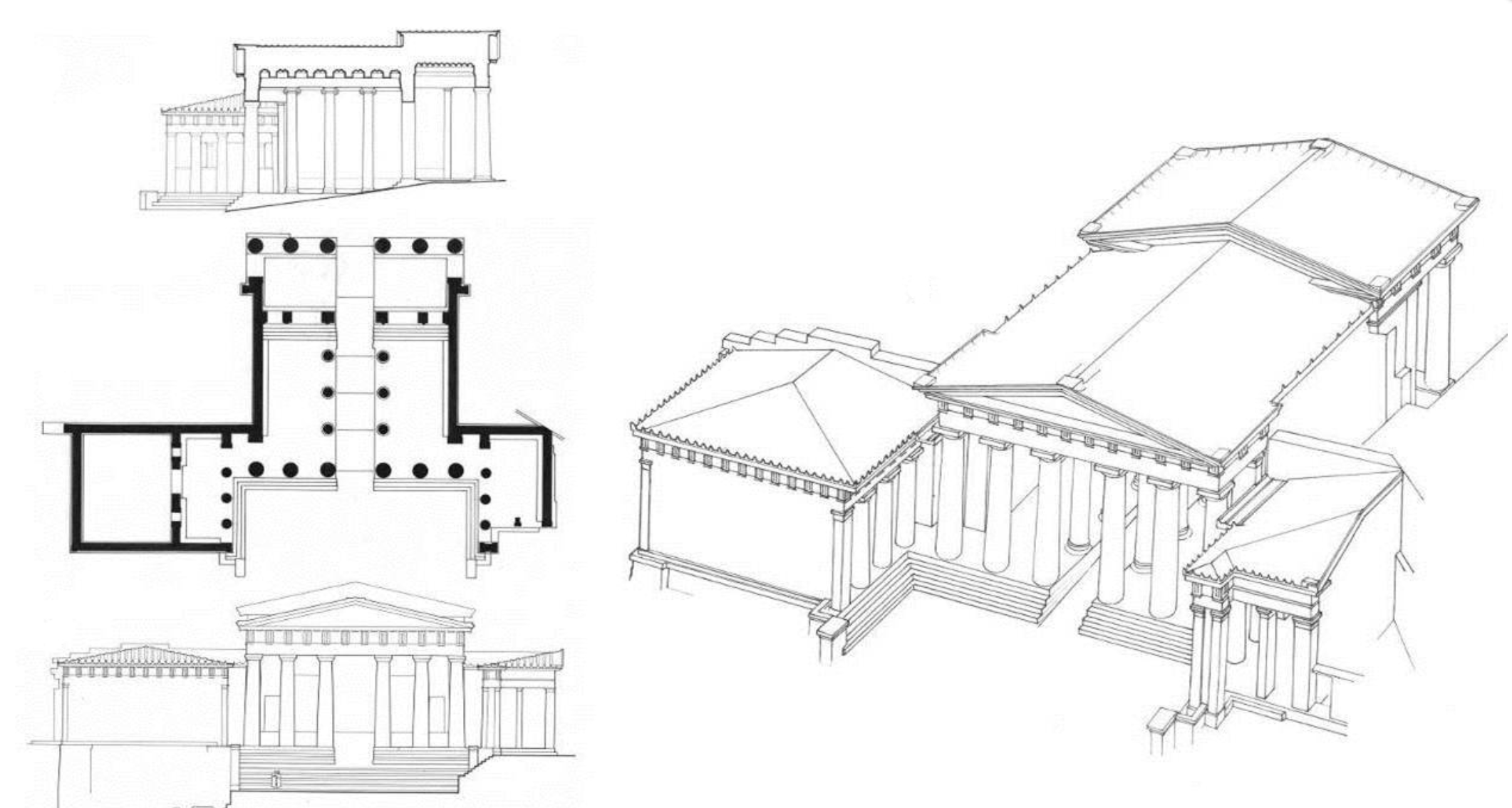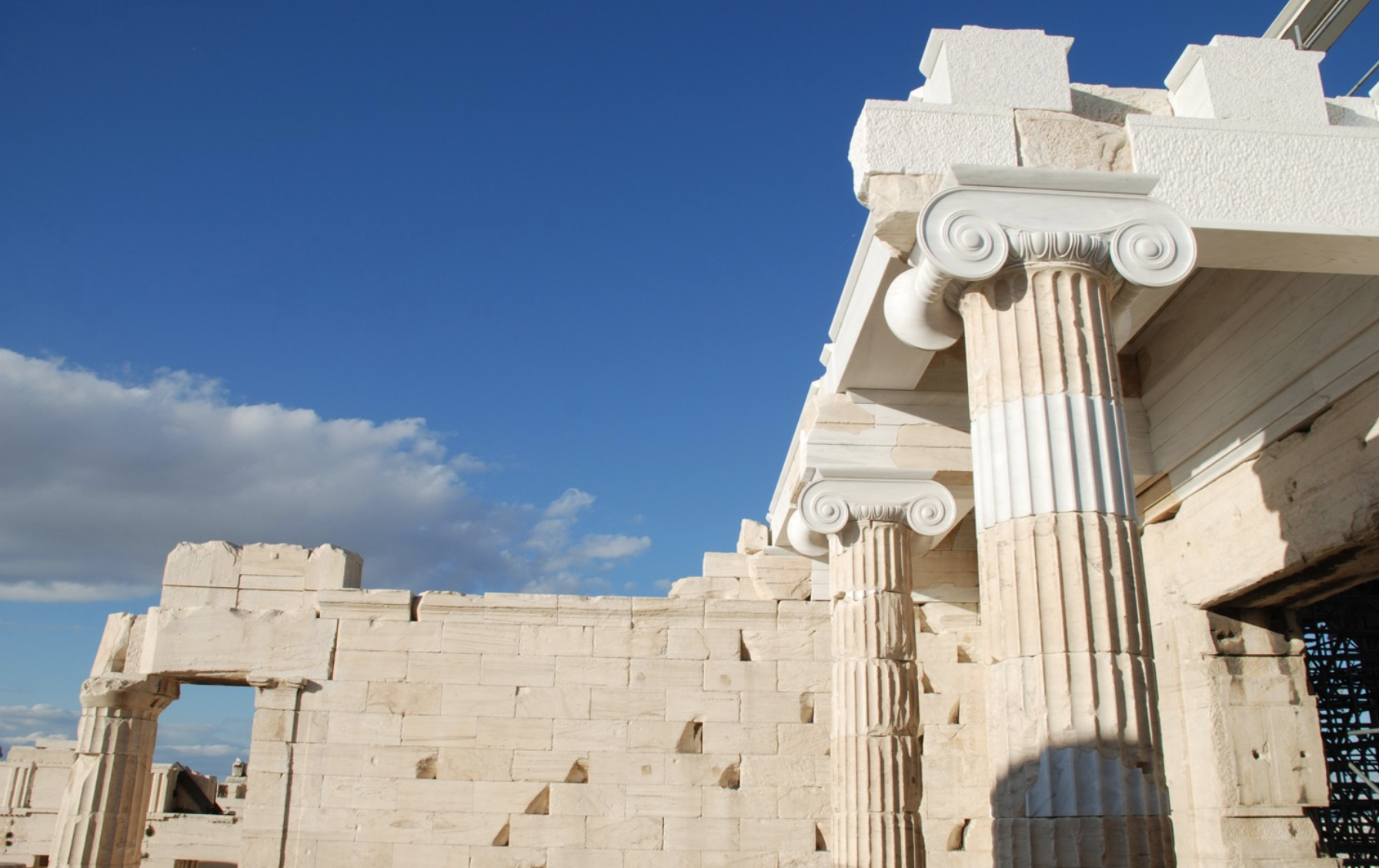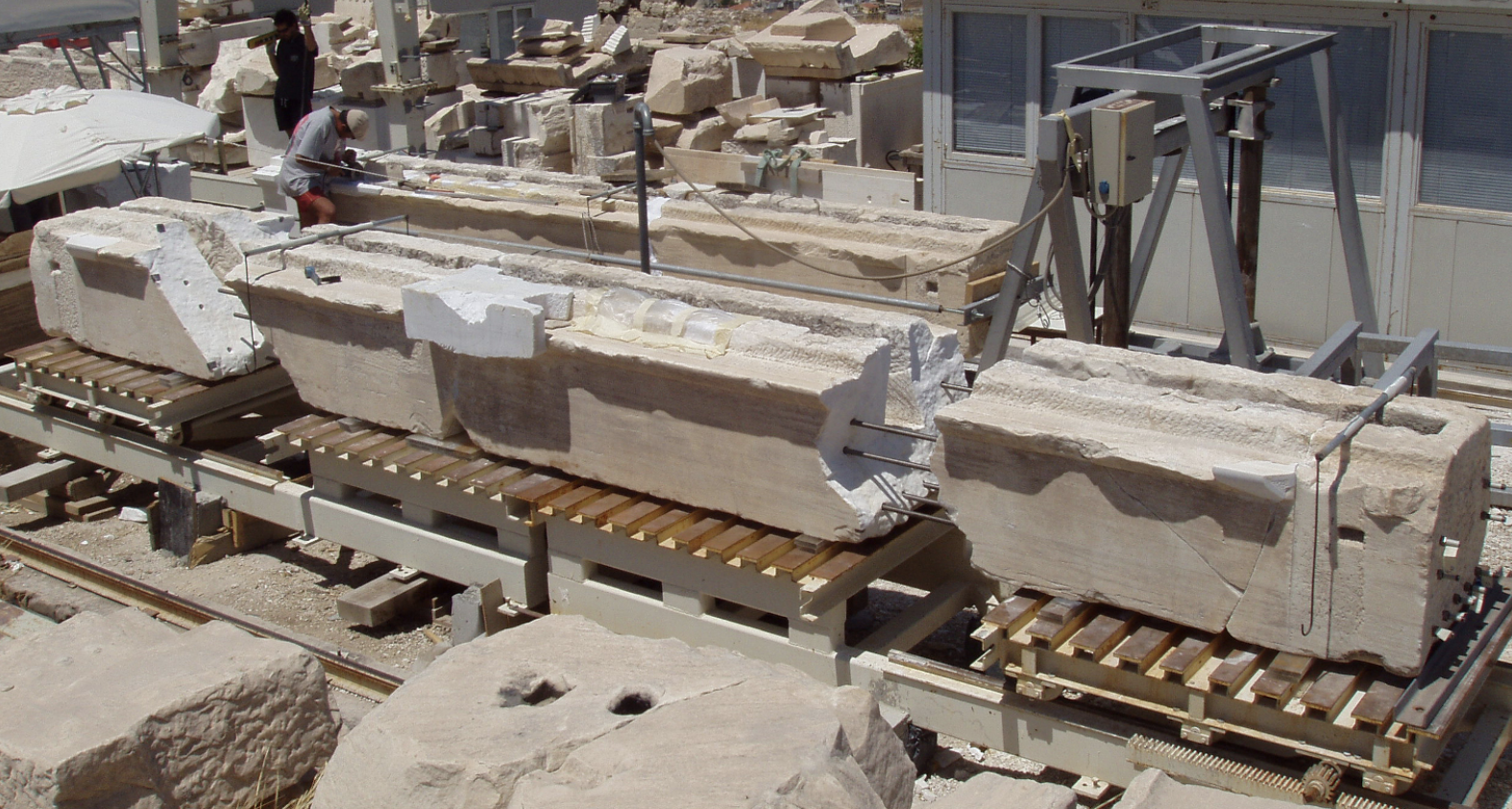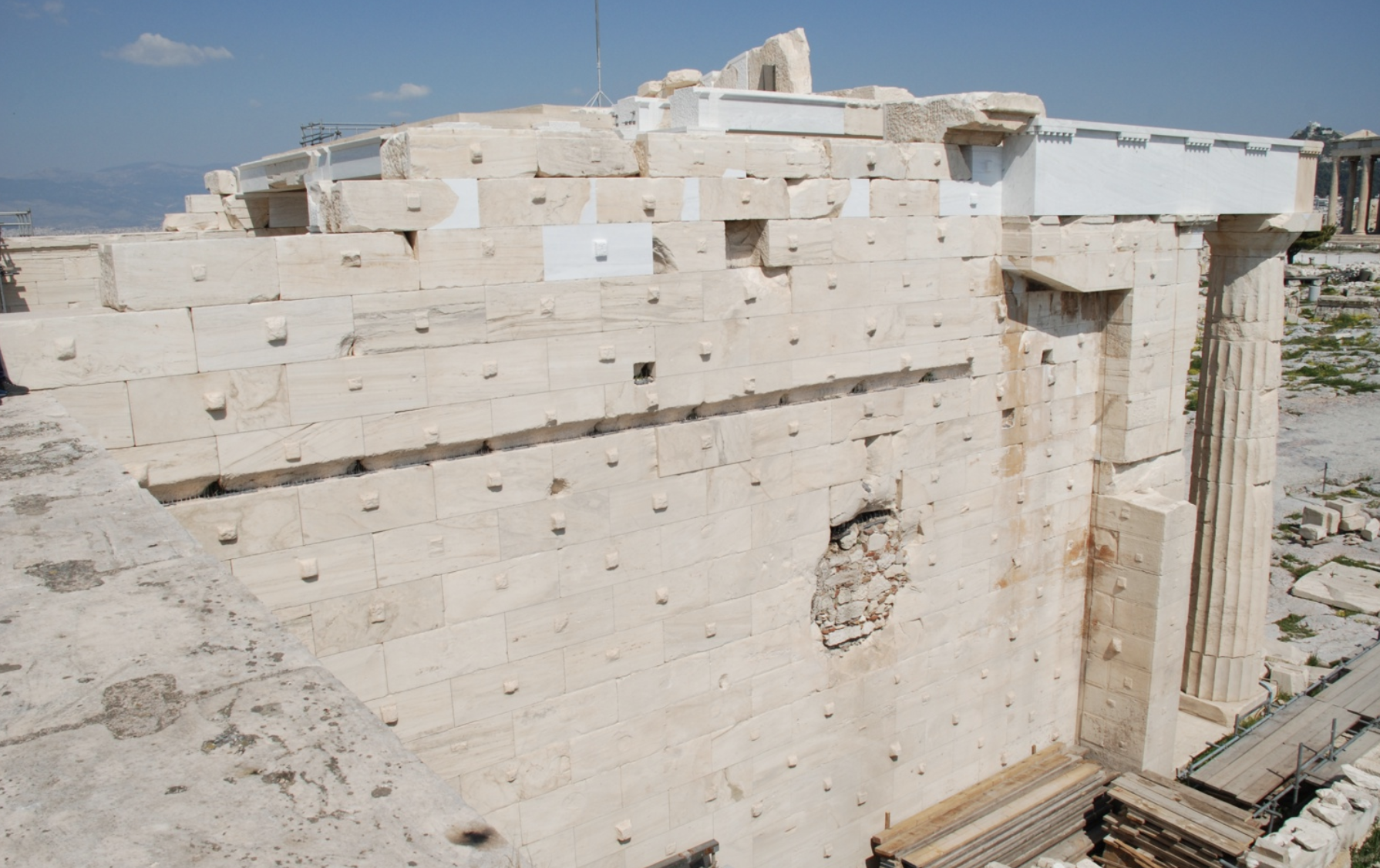
History
The monumental gateway entranceway to Athena’s sanctuary was established in the 5th century by architect Mnesikies under the Periclean building project, but was never finished. It is comprised of 3 buildings on two different levels – a central, hexastyle Doric structure framed by two wings at the northwest and southwest corner. Openings and groups of columns divide the grand construction into separate sections with halls, marble ceilings, porticoes, and porches. Throughout history, the Propylaea was used as a fortification to the Acropolis as well as a Christian basilica, Frankish and Florentine palaces, and a garrison and munitions storehouse for the Turks during their rule. Of course, like many of the Acropolis monuments, this massive edifice suffered damage from explosions and natural causes, producing ruins and destruction.
Reconstruction
Despite earlier interventions, the now completed project revamped many sections affected by the oxidation of the iron initially used. To prepare, the worksite was organized on a platform raised on iron posts, avoiding contact with the ancient relics and rocks. In fact, over 900 of the debris found on the Acropolis rock proved to be joining fragments on portico slabs, ceilings, and halls.
Parts of the once, brightly painted marble coffered-ceiling were taken down and restored at the northeast part of the central building. Beams, slabs and capitals were restored as well due to their inadequate conditions. Other fragments were studied meticulously and either reconditioned or positioned again in their according places throughout the Propylaea.
In 2002, interventions began on the most notable part of this monument, the central building that serves as the main entryway. Two programs were conducted to begin the project – the restoration of the north wall and the restoration of the east colonnade. As stated previously, the methods of Balanos caused widespread breakage and therefore modern anastelosis was vital. A total of 55 architectural members of the north wall and 35 members of the east colonnade were dismantled, reset, and inputted with new metal reinforcements, giving the Propylaea its image today.





